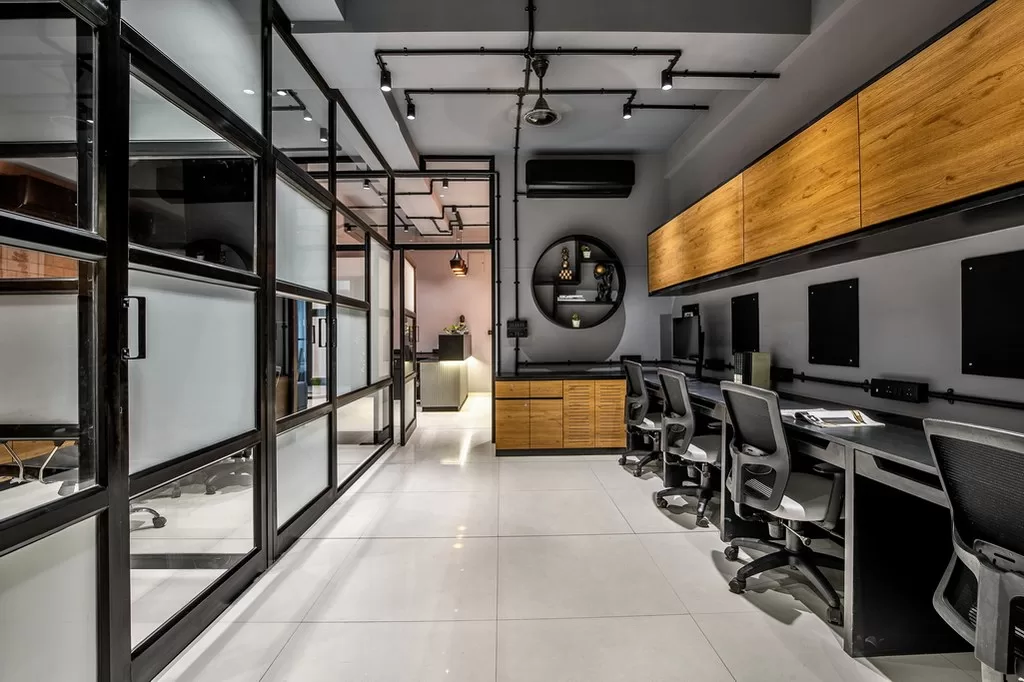
When it comes to corporate office spaces, the design of the interior plays a crucial role in shaping the environment and culture of the company. A well-designed workspace can enhance productivity, foster creativity, and promote employee well-being. In this guide, we will explore the key aspects of corporate office interior design and provide tips on how to transform your workspace into a more functional and inspiring environment.
The Importance of Corporate Office Interior Design
Corporate office interior design is more than just making the workspace look visually appealing. It is about creating a functional and comfortable environment that supports the needs of employees and aligns with the company's values and objectives. Here are some reasons why office interior design is important:
Enhances Productivity
- Well-designed workspaces can improve employee focus and efficiency.
- Strategic layout and design elements can streamline workflow and optimize processes.
Fosters Creativity
- Innovative and inspiring design can stimulate creative thinking and problem-solving.
- Collaborative spaces encourage idea generation and teamwork.
Promotes Well-being
- Comfortable and ergonomic furniture promotes good posture and reduces physical strain.
- Natural light, plants, and other elements of biophilic design can enhance mood and reduce stress.
Key Elements of Corporate Office Interior Design
When planning the interior design of a corporate office, it is essential to consider a variety of elements to create a space that is both functional and visually appealing. Here are some key elements to focus on:
Layout and Space Planning
- Consider the workflow and communication patterns within the organization when designing the layout.
- Create distinct areas for different functions, such as individual workstations, meeting rooms, and collaborative spaces.
Color Palette and Lighting
- Choose a color scheme that reflects the company's brand identity and promotes a productive atmosphere.
- Ensure adequate lighting throughout the workspace to reduce eye strain and create a welcoming environment.
Furniture and Accessories
- Select ergonomic furniture that supports good posture and comfort for employees.
- Incorporate accessories such as plants, artwork, and textiles to add personality and warmth to the space.
Tips for Transforming Your Corporate Office
Whether you are designing a new office space or looking to refresh an existing one, here are some tips to help you transform your corporate office into a more functional and inspiring environment:
Understand Your Needs
- Assess the needs and preferences of your employees to create a workspace that supports their work style.
- Consider the specific requirements of different departments and teams when planning the layout and design.
Embrace Flexibility
- Design spaces that can easily adapt to different activities and modes of work, such as focused work, collaboration, and relaxation.
- Use modular furniture and movable partitions to create flexible work areas that can be reconfigured as needed.
Prioritize Comfort
- Invest in ergonomic furniture and adjustable workstations to support employee well-being and productivity.
- Provide comfortable seating options and designated break areas to promote relaxation and social interaction.
Incorporate Biophilic Design
- Bring elements of nature into the workspace, such as plants, natural light, and views of the outdoors.
- Use biophilic design principles to create a connection to the natural environment and enhance employee well-being.
Conclusion
Corporate office interior design plays a significant role in shaping the work environment and culture of a company. By focusing on key elements such as layout, color palette, furniture, and accessories, you can create a workspace that enhances productivity, fosters creativity, and promotes employee well-being. By following the tips provided in this guide, you can transform your corporate office into a functional and inspiring environment that supports the needs of your employees and aligns with your company's values and objectives.

Leave a Reply
You must be logged in to post a comment.